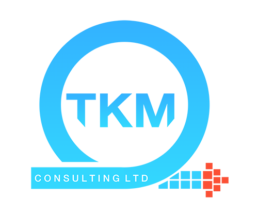The current buzzword seems to be “Agile Transformation”. Indeed, many organisations have either gone through an Agile Transformation or are about to embark on one. However, there are ways to ensure this change is implemented effectively. In this post, after defining Agile Transformation, I will distinguish between “Doing” Agile and “Being” Agile, and what this means for organisations.
Becoming Agile: What is Agile Transformation?
Before discussing Agile Transformation, we must first understand Agile. By definition, to be agile is to move fast and quickly. In an organisational setting, an Agile Team aims for continuous delivery of quality work via short and fast increments.
Often, Agile is mistaken for a framework. Though one may argue Agile can be applied as a methodology (another discussion for another time), remember, Agile is fundamentally a set of values and principles (outlined in the Agile Manifesto). Agility within teams is the goal and frameworks (e.g. Scrum, Lean, Kanban) are a means of achieving this.
Now that’s cleared up, back to the question at hand… Agile Transformation is the process of shifting a team from their original working environment to one that embraces Agile values and principles. Note, it is not mandatory for a framework or methodology to be applied during the transformation in order for it to be successful. However, the entire team and organisation should be clear on the fundamentals of Agile and the purpose of the transformation so that becoming Agile is as constructive as can be.
Doing Agile vs Being Agile
“So, what’s the difference between doing Agile and being Agile?”
I’m often asked the above question. Let me be clear: doing Agile and being Agile are two very different things. That said, there are always two sides to the same coin. So, a fine balance between doing and being Agile is needed for a truly successful Agile Transformation.
Doing Agile: Agile Adoption
 In a nutshell, doing Agile (also known as “Agile Adoption”) means following a set of rules or principles to achieve a given task. For example, an organisation may think it feels “right”, if not easy, to introduce Scrum. Albeit adopting Scrum may bring about organisational change, merely implementing a process does not equate to Agile Transformation. Let me talk you through a couple of examples of teams doing Agile, but not necessarily being Agile…
In a nutshell, doing Agile (also known as “Agile Adoption”) means following a set of rules or principles to achieve a given task. For example, an organisation may think it feels “right”, if not easy, to introduce Scrum. Albeit adopting Scrum may bring about organisational change, merely implementing a process does not equate to Agile Transformation. Let me talk you through a couple of examples of teams doing Agile, but not necessarily being Agile…
First, I’ve seen an organisation doing Agile by implementing a Daily Scrum. However, far too many people attended, and they usually overran the time-box. Ultimately, no value was gained from these ceremonies and it was almost robotic, which is the antithesis of Agile.
Second, it can be problematic when organisations introduce a Scrum team that is not cross-functional. This is because parts of the process are outside the team, leading to dependencies and blockers. In fact, this is basically a project run in Waterfall with some Scrum ceremonies slapped on top. I would argue this brings no real value and some may even consider it a waste of resources and unnecessary to bring these elements in to the system.
Don’t get me wrong, there’s a reason why Scrum is such a popular framework; prescribed ceremonies and example agendas can be really helpful to expedite delivery. But too often, I’ve seen and heard of companies believing they are being Agile, simply because they are doing Agile and continuing with the processes.
The take home here is that Agile Adoption should not be mistaken for Agile Transformation, despite the fact that the two phrases are used interchangeably. Indeed, Agile Adoption forms part of an Agile Transformation, but focusing purely on doing Agile confines an organisation’s ability to realise the true benefits of Agile working.
Being Agile: Agile Transformation
Funny enough, there are no instructions on how to be Agile, not even in the Agile Manifesto. So, from my experience, being Agile is about having an Agile mindset. By this, I mean embodying the values and principles outlined in the Agile Manifesto.
As explained, it takes more than doing Agile to be(come) Agile. So, although setting up ceremonies will help, bear in mind that only one Agile Manifesto value states software and no value prescribes a process, framework or methodology. The other values highlight the importance of focusing on individuals and teams, collaborating and being responsive. Therefore, elements of being Agile also include providing support to your team and the wider organisation, as well as checking-in and ensuring everyone is working as a unit towards a common goal.
Furthermore, the role of attitude and behaviour is often underestimated when using Agile to increase performance. Within teams, encourage short feedback loops, continuous learning, as well as adapting and improving to ultimately satisfy the stakeholders needs. A culture that lives the Agile values and understands why these are important for workflow is paramount in being Agile.
In fact, I would argue that an Agile mindset is the foundation of becoming Agile. However, by doing Agile well, organisations are able to leverage the behaviour and culture that facilitates this way of being. Hence, doing Agile and being Agile are equally important for an effective Agile Transformation.
Transformation Checklist
Align with Agile values, teamwork and collaboration are key elements of a successful Agile Transformation. The following checklist can be used when embarking on this journey…
- Continuous Improvement
Build a culture of continuous improvement. Instil short feedback loops, both internally and externally. Continuously learn and grow at every level of your organisation.
- Use Empirical Data
Agile teams are more receptive to decisions based on real data and facts. For example, working on a new feature based on feedback from customer focus groups or data from A/B testing.
- Collaborate and Communicate
Communication and collaboration come hand-in-hand. Both are imperative, not just at a team level but across the whole organisation.
- Transparency, Inspection and Adaptation
Transparency (i.e. clear and open communication) is vital, especially when dealing with issues. This allows inspection of the process and us, which enables us to adapt accordingly to current internal or external needs.
- Values
Have a values-based focus. Not only does this mean providing value to customers, early and often, but also having shared values in Agile teams and the organisation as a whole. All individuals should have courage and be responsible, open, transparent and committed.
Transformation or Organisational Change?
 Organisations tend to have a misconception that “boom! We are now Agile” following a two-day Agile workshop. Of course, that is not realistic, but if only achieving Agile was that simple! Successful Agile Transformations require a balance of doing Agile (e.g. adopting practices, following ceremonies) and being Agile (e.g. fostering a culture of change and adaptability, having a shared common goal). Organisations usually implement one or the other in hopes of a quick fix. Indeed, there may be some organisational change as a result of doing Agile or being Agile, but an organisation will not be truly Agile with only one component.
Organisations tend to have a misconception that “boom! We are now Agile” following a two-day Agile workshop. Of course, that is not realistic, but if only achieving Agile was that simple! Successful Agile Transformations require a balance of doing Agile (e.g. adopting practices, following ceremonies) and being Agile (e.g. fostering a culture of change and adaptability, having a shared common goal). Organisations usually implement one or the other in hopes of a quick fix. Indeed, there may be some organisational change as a result of doing Agile or being Agile, but an organisation will not be truly Agile with only one component.
Despite the focus on teams and collaboration, do not overlook the power of the individual. Everyone must be Agile in order for the Agile Transformation to succeed. Creating a psychologically safe environment, where people trust one another and have an intrinsic motivation towards set goals, supports high-performing, self-organised teams. These qualities lend themselves to greater agility, meaning teams are able to adapter faster to the market and stay competitive. Essentially, individuals, teams and organisations competently being and doing Agile have become Agile.
Your personal inventory for AgiliTEE.
